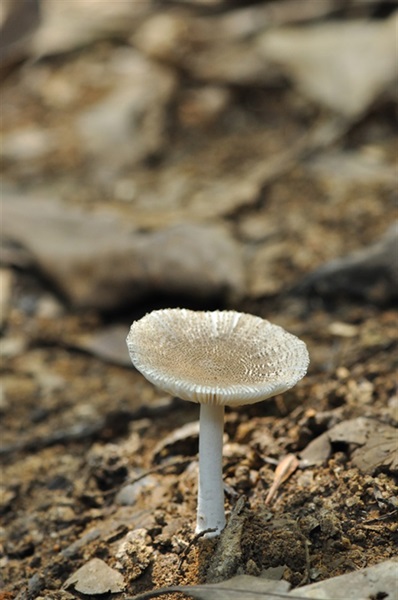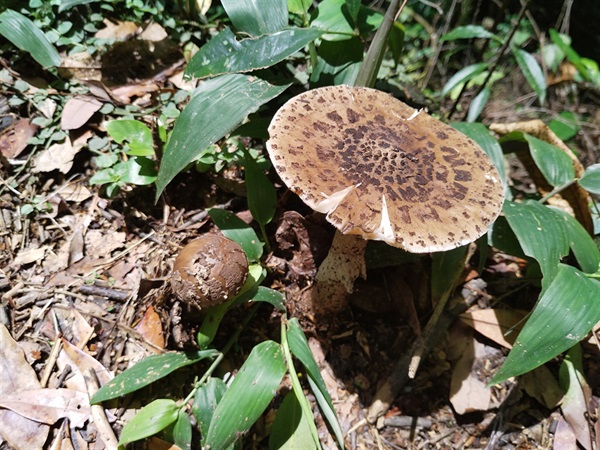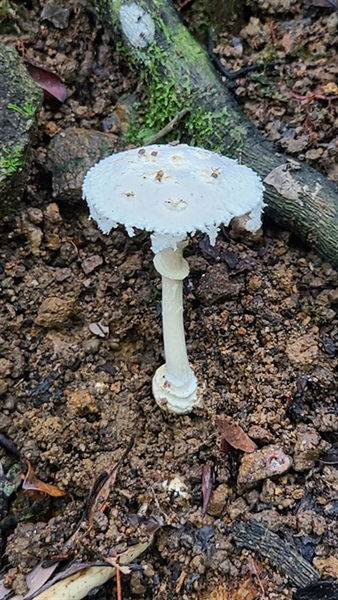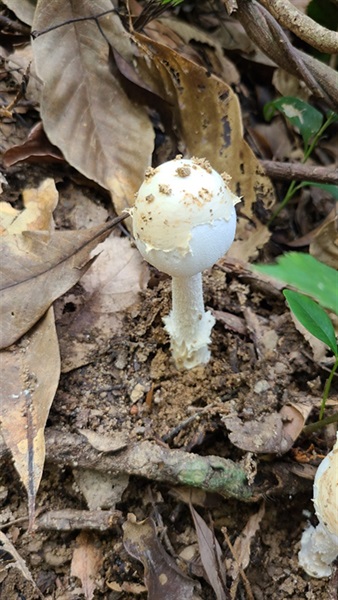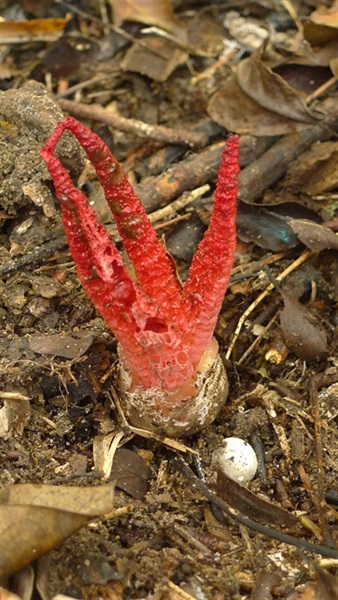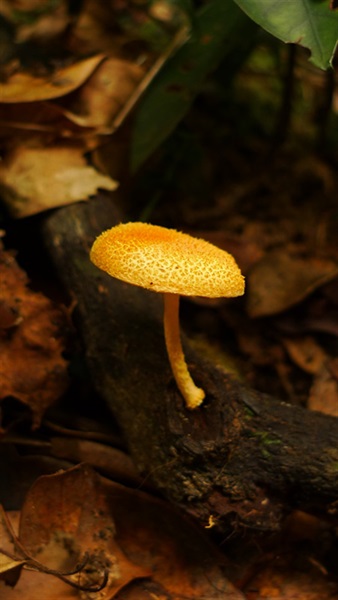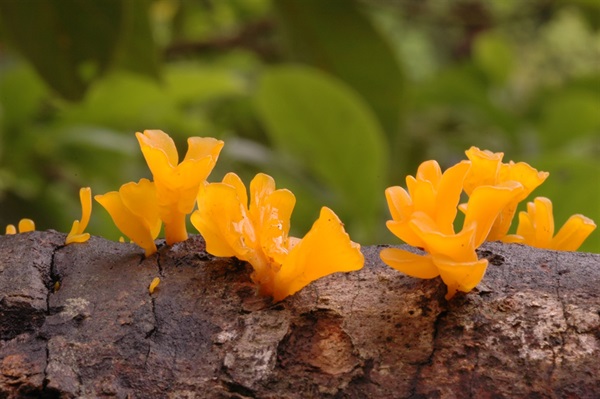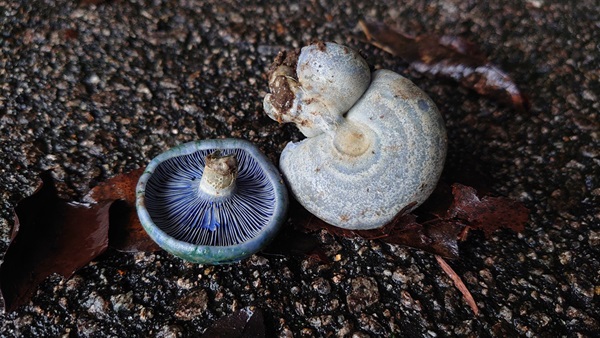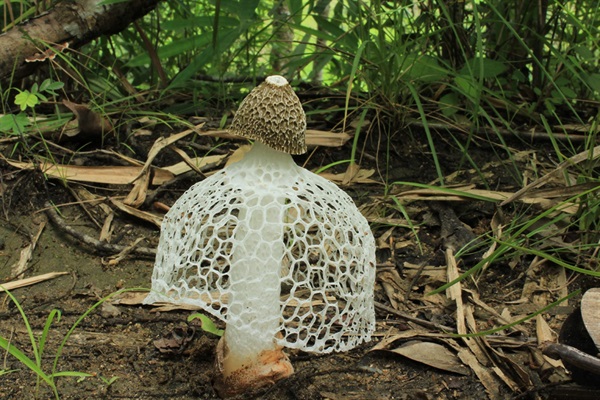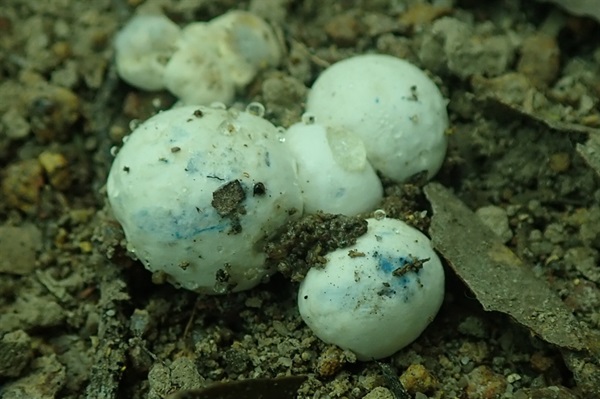Fungi are neither plants nor animals but belong to a separate Kingdom on their own. They do not contain chlorophyll like green plants and they feed themselves by degrading other organic matters. A mushroom is the reproductive structure (fruiting body) of a fungus and a comparatively short-lived stage in the whole life cycle of a fungus. Regardless of shapes and forms, any reproductive structure develops to form and distribute spores. There are essentially two large, yet artificial, but very convenient groups: the macrofungi or mushrooms, which can be seen with the unaided eye, and the microfungi or molds, whose structures can only be seen properly with the microscope. It is important to know that macrofungal species are identified using their fruiting bodies, while microfungi are identified using microscopic structures. Although the main life-stage of a fungus comprises an extensive network of very fine threads that join to form mycelium, they cannot be used for identification because they resemble masses of cotton wool and could only be identified by DNA sequencing. As a general rule, most higher plants stay in one place year after year and so they can be revisited at any time. However, macrofungi often do not behave in this way. Some species may appear in the same location year after year, but others may have a single appearance of a couple of days over an interval of 10 years or so and the reason is not clear.
Most fungi are saprotrophic which live on fallen branches, stumps, leaves, humus, soil, dung and other debris, but some are parasitic and feed on living things. In different ecosystems, fungi make conditions suitable for the evolution and existence of macroscopic life forms and continue to drive and profoundly influence many of the essential biogeochemical cycles. Fungi play fundamental roles in regulating key ecosystem processes. It is estimated that global fungal diversity should range between 2.2 to 3.8 million, yet only 120,000 have been described so far. In other words, we only know about 3–5.5% of the global diversity. Fungi are sensitive to variations in temperature, humidity, and nutrients; their abundance or scarcity in response to environmental changes provides a useful indication of subtle changes within an environment.
Fungi are very diverse in Hong Kong, with over 2,100 records belonging to 850 genera have been reported. They consist of ascomycetes, basidiomycetes, lichens, oomycetes and zygomycetes, and are found from coastal areas, forests, freshwater, mangrove, marine water, and urban areas in association with dead organic matter or living plants and animals. However, fungal diversity has not been a popular field in biodiversity studies and so the actual number of species in Hong Kong should be more. Some researchers have estimated that fungal numbers may outnumber land plants by as much as 10.6:1 or 3.5:1 for macrofungi alone. Given that there are 3,300 vascular plants in Hong Kong, there would be as much as 35,000 fungal species, or 11,550 macrofungi locally.
In the past ten years, macrofungi (or mushrooms) have received much attention than before. This is partly due to the increasing concern of fungal diseases associated with urban trees that may link to the risk of failure, a number of mushroom poisoning cases associated with consumption of self-picked wild mushrooms and more people are interested in wild mushroom photography. With growing population of amateur mushroom lovers and more and more available fungal identification resources in the internet, more macrofungi have been recorded the first time in Hong Kong than before. For example, the macrofungal species Rossbeevera bispora and Lactarius indigo and many species of the presumably poisonous Amanita species have been recorded in recent mushroom census campaigns. They were once thought to be distributed in other parts of the world but should now be considered local residents in Hong Kong!
Article and photo source: Dr. Alvin Tang
View Checklist in Species Database
